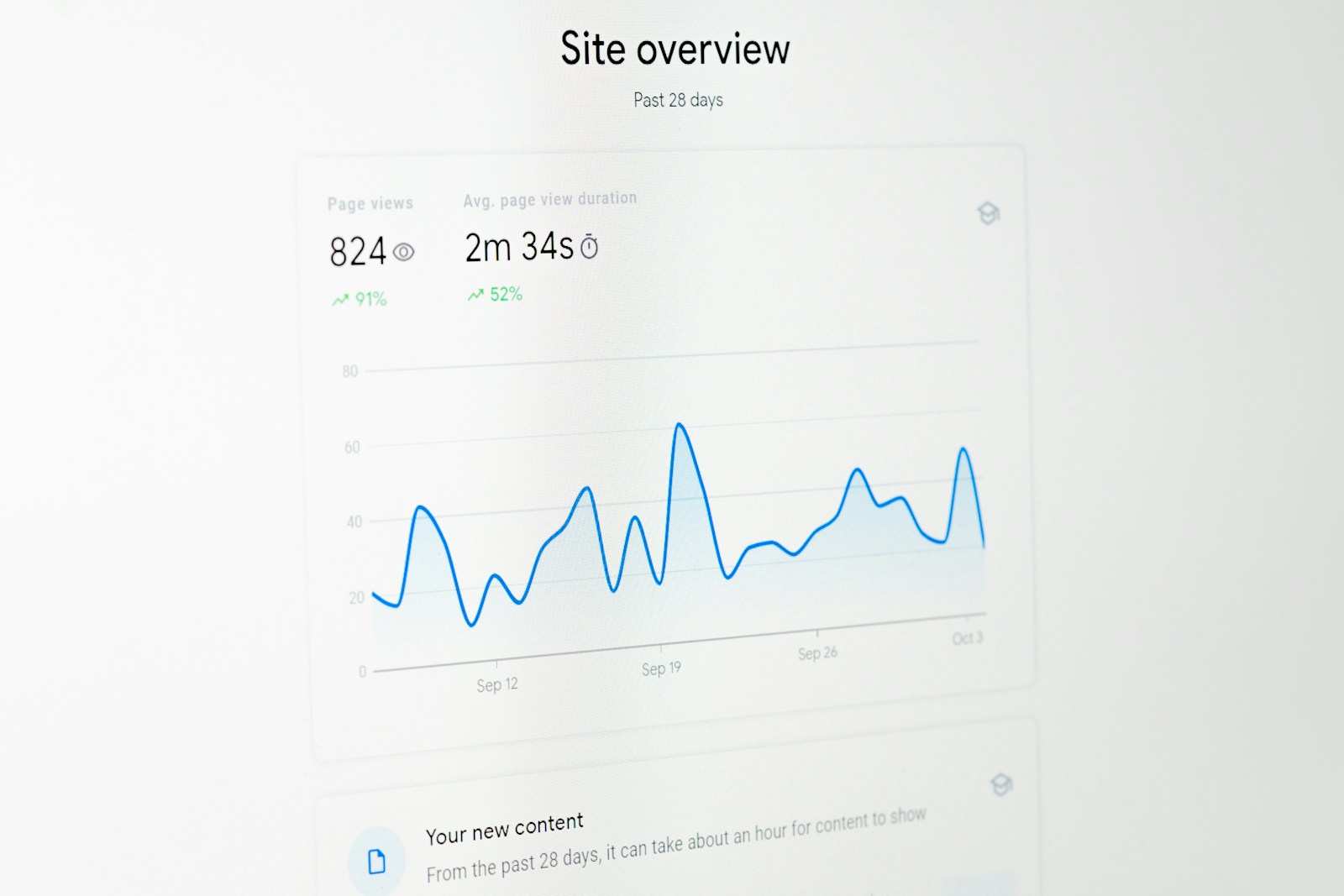Gathering detailed reports from real users is the fastest way to identify bugs that affect navigation and overall usability. Prioritize collecting actionable comments on layout clarity, loading speed, and interactive elements. This direct input reveals obstacles that automated scripts often miss, helping to refine interface design with measurable impact.
Addressing issues uncovered through feedback not only improves satisfaction but also protects income streams tied to customer retention. Even minor glitches or confusing workflows can lead to lost conversions. A well-structured review process ensures problems are logged clearly and resolved before reaching a wider audience.
Incorporate iterative rounds of evaluation with varied participants to capture diverse perspectives on functionality and appeal. Different backgrounds highlight distinct pain points, enabling comprehensive optimization. Regular updates based on these insights create smoother journeys for all visitors while minimizing risk of unnoticed defects.
Website testing: user experience feedback
Collecting input from real visitors during evaluation phases provides critical insight into site navigation and functionality. Reports highlighting interface flaws or bugs enable developers to prioritize fixes that directly improve interaction quality. For example, a detailed bug report revealing slow loading times on transaction pages in a cryptocurrency platform can lead to targeted backend optimizations, ultimately increasing retention and potential income streams.
Systematic validation of usability includes observing how participants complete tasks such as account creation or fund withdrawal without assistance. When testers encounter obstacles, their responses form the basis for refining workflows. In one case study, analysis of heatmaps and click paths showed that users struggled with multi-factor authentication prompts, prompting UI simplification which boosted conversion rates by 15% within weeks.
Structured methods for gathering actionable insights
Employing surveys, session recordings, and error tracking tools generates comprehensive data sets that guide product enhancements. Feedback loops must be established early and maintained consistently to catch regressions or emergent issues after updates. For instance, integrating automated error logs alongside direct commentary from testers allowed a blockchain startup to detect intermittent wallet synchronization bugs that would otherwise have remained unnoticed until impacting revenue.
Monetization potential correlates strongly with seamless interaction flows; interruptions caused by unresolved defects reduce trust and discourage transactions. Continuous assessment through phased validation cycles ensures steady progress toward an optimized platform. A notable example involves iterative testing of payment gateways where incremental improvements reduced transaction failures by 30%, significantly increasing reliable income channels.
Documentation of each anomaly reported is essential to prioritize corrective actions effectively. Clear categorization by severity and frequency helps allocate development resources efficiently. In practical terms, labeling bugs as critical when they block key activities like deposit or withdrawal prevents lost opportunities for earning money online. Maintaining transparent reporting dashboards also fosters collaboration between technical teams and stakeholder decision-makers.
Ultimately, integrating evaluative feedback into development lifecycles creates a resilient infrastructure capable of supporting scalable income models. Transparent communication about identified problems and resolutions builds user confidence while minimizing churn rates. By systematically addressing all points of friction uncovered during quality assurance phases, platforms can enhance overall satisfaction and secure sustainable financial growth in competitive markets.
Identifying UX Pain Points
To effectively identify interface issues, start by gathering detailed reports from rigorous site evaluations. These reports should highlight specific bugs that interrupt navigation flow or cause functionality errors, which directly impact interaction satisfaction. For instance, a cryptocurrency trading platform experiencing delayed transaction confirmations can confuse users and reduce trust, ultimately affecting the platform’s income generation.
Analyzing the ease of use involves monitoring how visitors engage with different elements such as buttons, forms, and menus. Tracking metrics like task completion rates and time-on-page reveals where users struggle. If a wallet setup process requires excessive steps or unclear instructions, it may deter newcomers, limiting user retention and revenue growth.
Techniques to Detect Interface Difficulties
Implementing structured sessions where participants verbalize their thoughts during navigation provides qualitative insights into pain points. Complement these with automated tools that detect malfunctions in real-time and compile error logs. For example, heatmap analysis can uncover areas frequently ignored or causing confusion on decentralized exchange interfaces.
Continuous collection of user input through surveys or embedded feedback widgets allows identification of recurrent obstacles. A frequent comment about slow load times when accessing market data indicates a backend performance issue needing immediate resolution to maintain competitive advantage.
- Bugs disrupting core features: Transaction failures, incorrect balance displays
- Poor accessibility: Non-responsive design on mobile devices
- Complex workflows: Excessive authentication steps causing drop-offs
Addressing these problems not only improves operational quality but also enhances monetization potential by increasing active participation rates. For example, streamlining login processes on crypto portfolio trackers reduces abandonment rates and encourages more frequent usage.
The synergy between systematic problem detection and iterative refinement fosters a more intuitive environment for all users. Technical audits combined with behavioral data create a comprehensive overview that guides developers toward eliminating friction points effectively. This approach ensures that platforms remain competitive while supporting sustainable income streams through enhanced client satisfaction.
Gathering Actionable User Input
Collecting precise insights from site visitors is best achieved by implementing structured mechanisms that capture detailed reports on functionality and accessibility. Prioritizing clear communication channels for submitting issues such as bugs or navigation hurdles enhances the overall platform’s reliability. For example, integrating in-app prompts that request concise descriptions alongside screenshots significantly improves the quality of information received, allowing developers to address specific problems rapidly without repetitive follow-ups.
Analyzing these submissions systematically reveals patterns impacting monetization potential, since friction points can directly affect transaction volume and income streams. A practical approach involves categorizing reports by severity and frequency, enabling teams to allocate resources effectively toward resolving critical usability obstacles first. Real-world case studies show that platforms optimizing feedback loops see a 30% reduction in unresolved errors within three months, contributing to sustained user engagement and higher revenue retention.
Effective Methods for Capturing Detailed Observations
Leveraging diverse data collection tools such as session recordings, heatmaps, and direct input forms offers a multi-angle perspective on visitor interaction quality. These instruments complement each other: while heatmaps highlight interface hotspots and bottlenecks, direct submissions provide context-rich narratives explaining why users encounter difficulties. Combining quantitative metrics with qualitative explanations leads to more actionable resolutions during development cycles.
An illustrative example comes from blockchain wallets where users frequently report latency issues or confusing transaction confirmations. By analyzing combined feedback reports alongside backend logs, engineers pinpointed synchronization bugs causing delays. Addressing these led not only to improved transactional throughput but also boosted confidence among stakeholders reliant on timely updates–directly influencing platform profitability through increased trading activity.
Analyzing feedback for improvements
Addressing reported issues swiftly enhances platform functionality and increases revenue streams by preventing user attrition. Prioritizing bug identification through systematic reports allows developers to eliminate critical disruptions that degrade navigation and task completion rates.
Evaluating input from site visitors reveals patterns related to interface intuitiveness and operational flow. This data-driven approach informs targeted refinements, resulting in smoother interactions and higher retention metrics, which directly correlate with income stability.
Systematic categorization of input data
Organizing received comments into categories such as functionality errors, design flaws, and interaction difficulties facilitates focused troubleshooting. For example, segregating reports about loading delays versus visual inconsistencies enables dedicated teams to apply specialized solutions efficiently.
- Bug resolution: Fixing backend defects that cause crashes or incorrect calculations improves trustworthiness.
- Navigational clarity: Simplifying menu structures based on observed confusion points reduces abandonment rates.
- Content accessibility: Enhancing readability and responsiveness ensures inclusivity across devices.
This structured analysis accelerates turnaround time for updates, which sustains positive perceptions and stabilizes transaction volumes on financial platforms.
Implementing iterative modifications guided by analytics
Utilizing heatmaps and clickstream data alongside direct commentary provides a comprehensive view of interaction bottlenecks. A cryptocurrency exchange platform, for instance, noted increased drop-offs on the withdrawal page due to unclear instructions; subsequent adjustments resulted in a 15% improvement in completed transactions within a month.
Such cases underline the necessity of continuous observation combined with user-submitted observations to refine workflows incrementally. These enhancements not only boost satisfaction but also promote increased trading activity, reflecting positively on overall earnings.
Balancing technical fixes with intuitive design improvements
Tackling purely functional bugs is insufficient without addressing ergonomic aspects that influence how easily individuals accomplish tasks. Incorporating straightforward language and minimizing unnecessary steps can transform complicated processes into accessible ones, encouraging prolonged engagement.
- Error message clarity: Replacing cryptic alerts with explanatory prompts helps users correct mistakes independently.
- Streamlined onboarding: Guiding newcomers through essential features reduces frustration-related dropouts.
This dual focus ensures that technological robustness complements human-centered design principles, ultimately safeguarding income generated through sustained platform usage.
Prioritizing UX Fixes by Impact
Focus first on resolving issues that directly affect transaction flows and revenue generation. For example, a bug preventing users from completing payments or withdrawing funds can sharply reduce income streams and damage platform credibility. Reports from recent audits indicate that delays in addressing such critical faults correlate with up to a 15% drop in active trader retention within weeks. Therefore, prioritize fixes that restore smooth financial operations before attending to less urgent interface glitches.
Gather detailed data from systematic evaluations and community input to quantify the severity of each problem. Use metrics like frequency of occurrence, user dropout rate, and effect on conversion funnels to rank defects objectively. A well-documented report might reveal that a confusing navigation path causes only minor frustration but rarely leads to abandonment, while an error message during wallet connection triggers immediate session termination for many participants.
Technical Framework for Prioritization
Implementing a weighted scoring system helps balance multiple factors when scheduling remediation tasks:
- Financial impact: How much potential income is lost due to the issue?
- User engagement: Does the problem cause significant disengagement or churn?
- Frequency: How often does the fault occur across sessions?
- Complexity: What resources are required for resolution?
This methodical approach ensures that development teams allocate resources efficiently rather than reacting impulsively to isolated complaints.
A case study involving a decentralized exchange revealed that prioritizing fixes based on reported transaction failures led to a swift recovery of monthly revenue by 22%. Conversely, addressing cosmetic bugs first prolonged user dissatisfaction and delayed critical improvements. Continuous monitoring through automated logs combined with direct participant comments created a feedback loop enabling prompt identification of high-impact malfunctions.
Ultimately, transparency in reporting progress back to stakeholders encourages ongoing collaboration and trust. Clear communication about which complications have been resolved–and why certain issues receive priority–helps maintain confidence throughout iterative deployment cycles. This structured strategy not only improves platform reliability but also enhances long-term user loyalty and stable income growth.
Measuring Changes Post-Testing
To accurately assess improvements after iterative analysis, it is critical to track specific metrics that reflect interaction quality and operational flow. For example, a decline in bug reports combined with increased navigation speed signals enhanced usability. Detailed reports comparing pre- and post-intervention states provide clear evidence of progress or highlight areas still needing refinement.
Monetary outcomes also reveal practical impact: an uplift in transactional income following interface refinements often correlates directly with streamlined processes and reduced friction points. Incorporating heatmaps or session recordings can clarify which modifications most effectively guide visitors toward desired actions, reinforcing technical decisions with behavioral data.
Key Insights and Future Directions
- Quantitative benchmarks: Establish KPIs such as task completion time, error frequency, and conversion rates to objectively measure changes.
- Comprehensive reporting: Utilize layered analytics combining qualitative observations from testers with quantitative system logs to produce holistic assessments.
- Bug resolution tracking: Prioritize critical defects impacting functional flows; their elimination should be visibly reflected in subsequent evaluations.
- User-centric adjustments: Continuous feedback loops allow iterative tuning of interfaces to better align with audience expectations and behavior patterns.
- Revenue correlation: Align enhancements with business goals by monitoring how design shifts influence income streams over defined periods.
The evolution of evaluation methodologies will increasingly leverage AI-driven pattern recognition and predictive modeling to anticipate potential breakdowns before they manifest. This proactive approach promises not only faster remediation but also more personalized interaction pathways tailored to individual preferences. As these techniques mature, the ability to link technical refinements directly to financial performance will become more precise, enabling stakeholders to make informed investments into platform development confidently.
Ultimately, systematic measurement grounded in robust data fosters a cycle of continuous improvement–transforming raw insights into actionable strategies that elevate both operational integrity and economic outcomes simultaneously.





